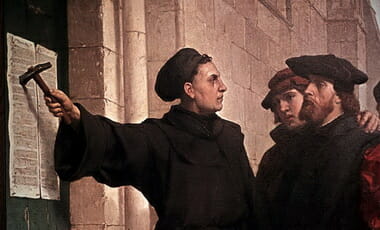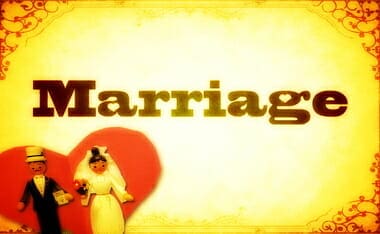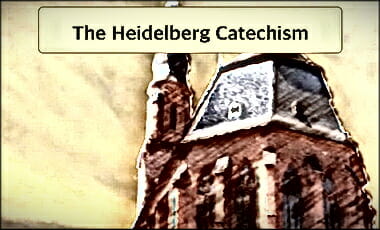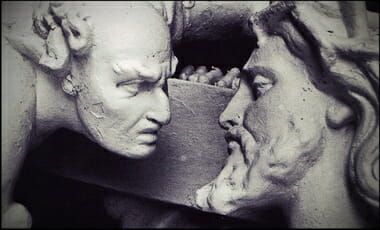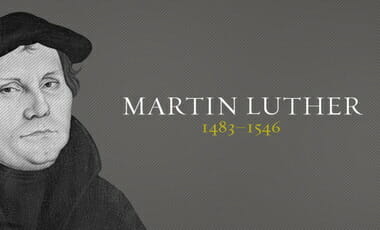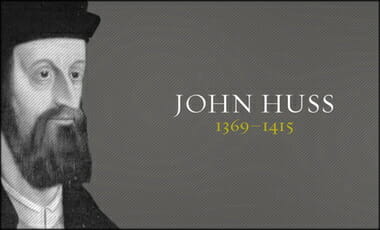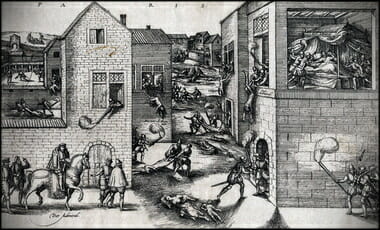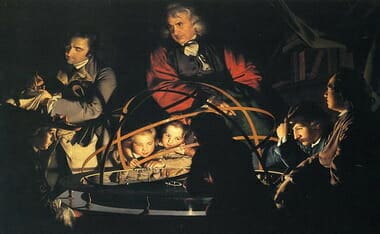I think the below is applicable to many things. Like masks, mandatory vaccines for colds. etc. But I can also see how the below will be used to counter life and the freedom the Founding Documents of this nation afford. This is to say I like the quote, but can see it being misused as well.
That is the reason for the post — just to counter what I can see others using it for.
So, how does this play out with the Left? [Or, strict Libertarians.] Below I will use some personal experience as well as some legal interpretation and thought experiments – with a dash of religious philosophy to get us started.
WORLDVIEWS IN THE MIX
Before we begin, many who know the site know that I speak with informed knowledge in my Judeo-Christian [theistic] worldview to those of other adopted worldviews [known or unknown] to change hearts and minds. Often people do not know what a worldview is or if they hold one, or that knowing of it even has purpose. Nor do they know that higher education just a couple generations ago thought it educations purpose to instill it. A quote I came across in seminary that I kept discusses this:
Alexander W. Astin dissected a longitudinal study conducted by UCLA started in 1966 for the Review of Higher Education [journal] in which 290,000 students were surveyed from about 500 colleges. The main question was asked of students why study or learn? “Seeking to develop ‘a meaningful philosophy of life’” [to develop a meaningful worldview] was ranked “essential” by the majority of entering freshmen. In 1996 however, 80% of the college students barely recognized the need for “a meaningful philosophy of life” and ranked “being very well off financially” [e.g., to not necessarily develop a meaningful worldview] as paramount. [1 & 2]
[1] Alexander W. Astin, “The changing American college student: thirty year trends, 1966-1996,” Review of Higher Education, 21 (2) 1998, 115-135.
[2] Some of what is here is adapted and with thanks to Dr. Stephen Whatley, Professor of Apologetics & Worldviews at Faith International University… as, they are in his notes from one of his classes.
I wish to highlight the “a meaningful philosophy of life.” This is known as a worldview, or, tools to dissect life and define reality. So the question becomes, what then is a worldview? Why do we need a coherent one?
WORLDVIEW: People have presuppositions, and they will live more consistently based on these presuppositions than even they themselves may realize. By “presuppositions” we mean the basic way an individual looks at life, his basic worldview, the grid through which he sees the world. Presuppositions rest upon that which a person considers to be the truth of what exists. People’s presuppositions lay a grid for all they bring forth into the external world. Their presuppositions also provide the basis for their values and therefore the basis for their decisions. “As a man thinketh, so he is,” is profound. An individual is not just the product of the forces around him. He has a mind, an inner world. Then, having thought, a person can bring forth actions into the external world and thus influence it. People are apt to look at the outer theater of action, forgetting the actor who “lives in the mind” and who therefore is the true actor in the external world. The inner thought world determines the outward action. Most people catch their presuppositions from their family and surrounding society the way a child catches measles. But people with more understanding realize that their presuppositions should be chosen after careful consideration of what worldview is true. When all is done, when all the alternatives have been explored, “not many men are in the room” — that is, although worldviews have many variations, there are not many basic worldviews or presuppositions.
— Francis A. Schaeffer, How Should We Then Live? The Rise and Decline of Western Thought and Culture (Wheaton: Crossway Books, 1976), 19-20.
So, even if one isn’t necessarily aware they have a worldview, they operate as if they do — borrowing from what they perceive as truths but are often a patchwork of interpretations that if questioned on, the self-refuting nature of these personally held beliefs are easy to dissect and show the person is living incoherently. The American Heritage Dictionary defines “worldview” this way:
1) The overall perspective from which one sees and interprets the world; 2) A collection of beliefs about life and the universe held by an individual or a group.”
What are these self-refuting aspects people find themselves moving in-between? What are the worldviews? Here are some listed, and really, that first list of seven is it. That is as broad as one can expand the worldview list:
- theism
- atheism
- deism
- finite godism
- pantheism
- panentheism
- polytheism[1]
Others still reduce it further: Idealism, naturalism, and theism.[2] C.S Lewis dealt with religious worldviews much the same way, comparing: philosophical naturalism (atheism), pantheism, and theism.[3]
[1] Doug Powell, The Holman Quick Source Guide to Christian Apologetics (Nashville, TN: Holman Publishers, 2006); and Norman L. Geisler and William D. Watkins, Worlds Apart: A Handbook on World Views (Eugene, OR: Wipf and Stock Publishers);
[2] L. Russ Bush, A Handbook for Christian Philosophy (Grand Rapids, MI: Zondervan, 1991).
[3] Mere Christianity (New York, NY: Macmillan Inc, 1943).
Knowing what “rose-colored-glasses” you are wearing and if you are being internally coherent in your dissecting of reality is important because of the cacophony of what is being offered:
 Faith Founded on Fact: Essays in Evidential Apologetics (Newburgh, IN: Trinity Press, 1978), 152-153.
Faith Founded on Fact: Essays in Evidential Apologetics (Newburgh, IN: Trinity Press, 1978), 152-153.
Joseph R. Farinaccio, author of “Faith with Reason: Why Christianity is True,” starts out his excellent book pointing a way to this truth that a well-informed public should know some of:
- This is a book about worldviews. Everybody has one, but most individuals never really pay much attention to their own personal philosophy of life. This is a tragedy because there is no state of awareness so fundamental to living life. — (Pennsville, NJ: BookSpecs Publishing, 2002), 10 (emphasis added).
-
“A worldview is a commitment, a fundamental orientation of the heart, that can be expressed as a story or in a set of presuppositions (assumptions which may be true, partially true or entirely false) which we hold (consciously or subconsciously, consistently or inconsistently) about the basic constitution of reality, and that provides the foundation on which we live and move and have our well being.” — James W. Sire, Naming the Elephant: Worldview as a Concept (Downers Grove, IL: IVP, 2004), 122 (emphasis added).
Is this part of the reason so many today, especially young people, do not have “well-being”?
(More on worldviews can be found in my first chapter of my book titled: “INTRODUCTION: TECHNOLOGY JUNKIES” — PDF | As well as my WORLDVIEW POST on the matter)
The Law of Non Contradiction
I bet many reading this will have used the phrases or ideas below without realizing it was incoherent at best. I link to my chapter above, but here is an excerpt from it to better explain why a person’s worldview should be internally sound:
The law of non-contradiction is one of the most important laws of logical thought, in fact, one textbook author goes so far as to say that this law “is considered the foundation of logical reasoning.”[1] Another professor of philosophy at University College London says that “a theory in which this law fails…is an inconsistent theory.”[2] A great example of this inconsistency can be found in the wonderful book Philosophy for Dummies that fully expresses the crux of the point made throughout this work:
- Statement: There is no such thing as absolute truth.[3]
By applying the law of non-contradiction to this statement, one will be able to tell if this statement is coherent enough to even consider thinking about. Are you ready? The first question should be, “is this an absolute statement?” Is the statement making an ultimate, absolute claim about the nature of truth? If so, it is actually asserting what it is trying to deny, and so is self-deleting – more simply, it is logically incoherent as a comprehensible position[4] as it is in violation of the law of non-contradiction. Some other examples are as follows, for clarity’s sake:
“All truth is relative!” (Is that a relative truth?); “There are no absolutes!” (Are you absolutely sure?); “It’s true for you but not for me!” (Is that statement true just for you or is it for everyone?)[5] In short, contrary beliefs are possible, but contrary truths are not possible.[6]
Many will try to reject logic in order to accept mutually contradictory beliefs; often times religious pluralism[7] is the topic with which many try to suppress these universal laws in separating religious claims that are mutually exclusive. Professor Roy Clouser puts into perspective persons that try to minimize differences by throwing logical rules to the wayside:
The program of rejecting logic in order to accept mutually contradictory beliefs is not, however, just a harmless, whimsical hope that somehow logically incompatible beliefs can both be true… it results in nothing less than the destruction of any and every concept we could possess. Even the concept of rejecting the law of non-contradiction depends on assuming and using that law, since without it the concept of rejecting it could neither be thought nor stated.[8]
Dr. Clouser then goes on to show how a position of psychologist Erich Fromm is “self-assumptively incoherent.”[9] What professor Clouser is saying is that this is not a game. Dr. Alister McGrath responds to the religious pluralism of theologian John Hick by showing just how self-defeating this position is:
The belief that all religions are ultimately expressions of the same transcendent reality is at best illusory and at worst oppressive – illusory because it lacks any substantiating basis and oppressive because it involves the systematic imposition of the agenda of those in positions of intellectual power on the religions and those who adhere to them. The illiberal imposition of this pluralistic metanarrative[10] on religions is ultimately a claim to mastery – both in the sense of having a Nietzschean authority and power to mold material according to one’s will, and in the sense of being able to relativize all the religions by having access to a privileged standpoint.[11]
As professor McGrath points out above, John Hick is applying an absolute religious claim while at the same time saying there are no absolute religious claims to religious reality. It is self-assumptively incoherent. Anthropologist William Sumner argues against the logical position when he says that “every attempt to win an outside standpoint from which to reduce the whole to an absolute philosophy of truth and right, based on an unalterable principle, is delusion.”[12] Authors Francis Beckwith and Gregory Koukl respond to this self-defeating claim by showing that Sumner is making a strong claim here about knowledge:
He says that all claims to know objective moral truth are false because we are all imprisoned in our own cultural and are incapable of seeing beyond the limits of our own biases. He concludes, therefore, that moral truth is relative to culture and that no objective standard exists. Sumner’s analysis falls victim to the same error committed by religious pluralists who see all religions as equally valid.[13]
The authors continue:
Sumner’s view, however, is self-refuting. In order for him to conclude that all moral claims are an illusion, he must first escape the illusion himself. He must have a full and accurate view of the entire picture…. Such a privileged view is precisely what Sumner denies. Objective assessments are illusions, he claims, but then he offers his own “objective” assessment. It is as if he were saying, “We’re all blind,” and then adds, “but I’ll tell you what the world really looks like.” This is clearly contradictory.[14]
Philosopher Roger Scruton drives this point home when he says, “A writer who says that there are no truths, or that all truth is ‘merely negative,’ is asking you not to believe him. So don’t.”[15]
[1] Manuel Velasquez, Philosophy: A Text with Readings (Belmont, CA: Wadsworth, 2001), p. 51.
[2] Ted Honderich, ed., The Oxford Companion to Philosophy (New York, NY: Oxford Univ Press, 1995), p. 625.
[3] Tom Morris, Philosophy for Dummies, 46.
[4] Ibid.
[5] Norman L. Geisler and Frank Turek, I Don’t Have Enough Faith to Be an Atheist (Wheaton, IL: Crossway Books, 2004), 40.
[6] Ibid., 38.
[7] Religious Pluralism – “the belief that every religion is true. Each religion provides a genuine encounter with the Ultimate.” Norman L. Geisler, Baker Encyclopedia of Apologetics (Grand Rapids, MI: Baker Books, 1999), 598.
[8] Roy A. Clouser, The Myth of Religious Neutrality: An Essay on the Hidden Role of Religious Belief in Theories (Notre Dame, IN: Notre Dame Press, 2005), 178 (emphasis added).
[9] A small snippet for clarity’s sake:
Fromm’s position is also an example of this same dogmatic selectivity. He presents his view as though there are reasons for rejecting the law of non-contradiction, and then argues that his view of the divine (he calls it “ultimate reality”) logically follows from that rejection. He ignores the fact that to make any logical inference — to see that one belief “logically follows from” another — means that the belief which is said to “follow” is required on pain of contradicting oneself. Having denied all basis for any inference, Fromm nevertheless proceeds to infer that reality itself must be an all-encompassing mystical unity which harmonizes all the contradictions which logical thought takes to be real. He then further infers that since human thought cannot help but be contradictory, ultimate reality cannot be known by thought. He gives a summary of the Hindu, Buddhist, and Taoist expressions of this same view, and again infers that accepting their view of the divine requires him to reject the biblical idea of God as a knowable, individual, personal Creator. He then offers still another logical inference when he insists that:
Opposition is a category of man’s mind, not itself an element of reality…. Inasmuch as God represents the ultimate reality, and inasmuch as the human mind perceives reality in contradictions, no positive statement can be made about God.
In this way Fromm ends by adding self-referential incoherency to the contradictions and self-assumptive incoherency already asserted by his theory. For he makes the positive statement about God that no positive statements about God are possible.
Ibid., 178-179. In this excellent work Dr. Clouser shows elsewhere the impact of logic on some major positions of thought:
As an example of the strong sense of this incoherency, take the claim sometimes made by Taoists that “Nothing can be said of the Tao.” Taken without qualification (which is not the way it is intended), this is self-referentially incoherent since to say “Nothing can be said of the Tao” is to say something of the Tao. Thus, when taken in reference to itself, the statement cancels its own truth. As an example of the weak version of self-referential incoherency, take the claim once made by Freud that every belief is a product of the believer’s unconscious emotional needs. If this claim were true, it would have to be true of itself since it is a belief of Freud’s. It therefore requires itself to be nothing more than the product of Freud’s unconscious emotional needs. This would not necessarily make the claim false, but it would mean that even if it were true neither Freud nor anyone else could ever know that it is. The most it would allow anyone to say is that he or she couldn’t help but believe it. The next criterion says that a theory must not be incompatible with any belief we have to assume for the theory to be true. I will call a theory that violates this rule “self-assumptively incoherent.” As an example of this incoherence, consider the claim made by some philosophers that all things are exclusively physical [atheistic-naturalism]. This has been explained by its advocates to mean that nothing has any property or is governed by any law that is not a physical property or a physical law. But the very sentence expressing this claim, the sentence “All things are exclusively physical,” must be assumed to possess a linguistic meaning. This is not a physical property, but unless the sentence had it, it would not be a sentence; it would be nothing but physical sounds or marks that would not) linguistically signify any meaning whatever and thus could not express any claim — just as a group of pebbles, or clouds, or leaves, fails to signify any meaning or express any claim. Moreover, to assert this exclusivist materialism is the same as claiming it is true, which is another nonphysical property; and the claim that it is true further assumes that its denial would have to be false, which is a relation guaranteed by logical, not physical, laws. (Indeed, any theory which denies the existence of logical laws is instantly and irredeemably self-assumptively incoherent since that very denial is proposed as true in a way that logically excludes its being false.) What this shows is that the claim “All things are exclusively physical” must itself be assumed to have nonphysical properties and be governed by nonphysical laws or it could neither be understood nor be true. Thus, no matter how clever the supporting arguments for this claim may seem, the claim itself is incompatible with assumptions that are required for it to be true. It is therefore self-assumptively incoherent in the strong sense.
Ibid., 84-85 (emphasis added).
[10] Metanarratives, or, Grand Narratives – “big stories, stories of mythic proportions – that claim to be able to account for, explain and subordinate all lesser, little, local, narratives.” Jim Powell, Postmodernism for Beginners (New York, NY: Writers and Readers, 1998), 29.
[11] Alister E. McGrath, Passion for Truth: the Intellectual Coherence of Evangelicalism (Downers Grove, IL: IVP, 1996), 239.
[12] William Graham Sumner, Folkways (Chicago, IL: Ginn and Company, 1906), in Francis Beckwith and Gregory Koukl, Relativism: Feet Planted firmly in Mid-Air (Grand Rapids, Michigan: Baker Books, 1998), 46-47.
[13] Francis Beckwith and Gregory Koukl, Relativism: Feet Planted Firmly in Mid-Air (Grand Rapids, Michigan: Baker Books, 1998), 47.
[14] Ibid., 48
[15] Modern Philosophy (New York, NY: Penguin, 1996), 6. Found in: John Blanchard, Does God Believe in Atheists? (Darlington, England: Evangelical Press, 2000), 172.
This is part of a larger audio piece on Relativism:
Okay, that should get us all prepped for the next section…
….which is slightly more historical.
THEISM & AMERICA’S FOUNDING
Theism was the basis for our Founding Documents that undergirded our nations birth. For instance the phrase in the Declaration of Independence, “Law of Nature and Nature’s God.” AMERICAN HERITAGE EDUCATION FOUNDATION discusses this phrase a bit, of which I excerpta portion of:
The Declaration of Independence of 1776 tells much about the founding philosophy of the United States of America. One philosophical principle that the American Founders asserted in the Declaration was the “Law of Nature and Nature’s God.” This universal moral law served as their moral and legal basis for creating a new, self-governing nation. One apparent aspect of this law is that it was understood in Western thought and by early Americans to be revealed by God in two ways—in nature and in the Bible—and thus evidences the Bible’s influence in America’s founding document.
The “Law of Nature” is the moral or common sense embedded in man’s heart or conscience (as confirmed in Romans 2:14-15). It tells one to live honestly, hurt no one, and render to everyone his due. The law of “Nature’s God” as written in the Bible and spoken by Jesus Christ consists of two great commandments—to love God and love others (as found in Deuteronomy 6:5, Leviticus 19:18, Matthew 7:12, Matthew 22:36-40, Mark 12:28-31, and Luke 10:25-28). The first commandment, first found in Deuteronomy 6:5, is to “love the Lord your God with all your heart, soul, and strength.” The second commandment, often referred to as the Golden Rule and first found in Leviticus 19:18, is to “love your neighbor as yourself” or, as expressed by Jesus in Matthew 7:12, to “do to others as you would have them do to you.” Thus the content for both the natural and written laws is the same.
The law of Nature and God can be traced through the history and writings of Western Civilization. This principle is found, for example, in medieval European thought. In his 1265-1274 Summa Theologica, published in 1485, Italian theologian Thomas Aquinas acknowledged a “two-fold” moral law that is both general and specific:
The natural law directs man by way of certain general precepts, common to both the perfect [faithful] and the imperfect [non-faithful]: wherefore it is one and the same for all. But the Divine law directs man also in certain particular matters…. Hence the necessity for the Divine law to be twofold.[1]
Aquinas explained that the written law in the Bible was given by God due to the fallibility of human judgment and the perversion of the natural law in the hearts of many. In the 1300s, medieval Bible scholars referred to the “Law of Nature and God” as a simple way to describe God’s natural and written law, its two expressions. The phrase presented this law in the same order and timing in which God revealed it to mankind in history—first in creation and then in Holy Scripture.
During the Reformation period, French religious reformer John Calvin affirmed this two-fold moral law in his 1536 Institutes of the Christian Religion, observing, “It is certain that the law of God, which we call the moral law, is no other than a declaration of natural law, and of that conscience which has been engraven by God on the minds of men.”[2] He further explains, “The very things contained in the two tables [or commandments in the Bible] are…dictated to us by that internal law which…is…written and stamped on every heart.”[3] Incidentally, Puritan leader John Winthrop, who led a large migration of Calvinist Puritans from England to the American colonies, identified God’s two-fold moral law in his well-known 1630 sermon, A Model of Christian Charity, delivered to the Puritans as they sailed to America. He taught,
There is likewise a double law by which we are regulated in our conversation one towards another: …the law of nature and the law of grace, or the moral law and the law of the Gospel…. By the first of these laws, man…is commanded to love his neighbor as himself. Upon this ground stands all the precepts of the moral law which concerns our dealings with men.[4]
During the Enlightenment period, British philosopher John Locke, who was influential to the Founders, wrote of the “law of God and nature” in his 1689 First Treatise of Civil Government.[5] This law, he further notes in his 1696 Reasonableness of Christianity, “being everywhere the same, the Eternal Rule of Right, obliges Christians and all men everywhere, and is to all men the standing Law of Works.”[6] English legal theorist William Blackstone, another oft-cited thinker of the American founding era, recognized the two-fold moral law in his influential 1765-1769 Commentaries on the Laws of England. This law, he believed, could be known partially by man’s imperfect natural reason and completely by the Bible. Due to man’s imperfect reason, Blackstone like Aquinas observed, the Bible’s written revelation is necessary:
If our reason were always, as in our first ancestor [Adam] before his transgression, clear and perfect, unruffled by passions, unclouded by prejudice, unimpaired by disease or intemperance, the task [of discerning God’s law and will] would be pleasant and easy. We should need no other guide but this [reason]. But every man now finds the contrary in his own experience, that his reason is corrupt and his understanding is full of ignorance and error.
This [corruption] has given manifold occasion for the benign interposition of divine providence which, in compassion to the frailty, imperfection, and blindness of human reason, has been pleased, at sundry times and in divers manners, to discover and enforce its laws by an immediate and direct revelation. The doctrines thus delivered we call the revealed or divine law, and they are to be found only in the holy scriptures.[7]
[1] Thomas Aquinas, The Summa Theologica, trans. Fathers of the English Dominican Province, pt 2/Q 91, Article 5, trans Fathers of the English Dominican Province (Benziger Bros., 1947) in Christian Classics Ethereal Library, ccel.org <https://www.ccel.org/a/aquinas/summa/home.html >.
[2] John Calvin, The Institutes of the Christian Religion, vol. 3, bk. 4, trans. John Allen (Philadelphia, PA: Philip H. Nicklin, 1816), 534-535.
[3] John Calvin, The Institutes of the Christian Religion: A New Translation, vol. 1, trans. Henry Beveridge (Edinburgh, Scotland: Printed for Calvin Translation Society, 1845), 430.
[4] John Winthrop, A Model of Christian Charity, 1630, in Puritan Political Ideas, 1558-1794, ed. Edmund S. Morgan (Indianapolis, IN: Hackett Publishing, 2003), 75-93.
[5] John Locke, First Treatise of Civil Government, in Two Treatises on Government, bk. 1 (London: George Routledge and Sons, 1884), 142, 157, 164.
[6] John Locke, The Reasonableness of Christianity, as delivered in the Scriptures, Second Edition (London: Printed for Awnsham and John Churchil, 1696), 21-22.
[7] William Blackstone, Blackstone’s Commentaries in Five Volumes, ed. George Tucker (Union, NJ: Lawbook Exchange, 1996, 2008), 41.
The researcher may benefit from my “The Two Books of Faith – Nature and Revelatory“
I also wish to commend to you an article by James N. Anderson (Professor of Theology and Philosophy, at Reformed Theological Seminary, Charlotte) in the Reformed Faith & Practice Journal (Volume 4 Issue 1, May 2019).
Abraham Williams preached a sermon where he drilled down on the idea at an “election day sermon” in Boston Massachusetts’s, New-England, May 26. 1762.
- “The law of nature (or those rules of behavior which the Nature God has given men, … fit and necessary to the welfare of mankind) is the law and will of the God of nature, which all men are obliged to obey…. The law of nature, which is the Constitution of the God of nature, is universally obliging. It varies not with men’s humors or interests, but is immutable as the relations of things.”
Amen pastor.
A good resource for resources on this topic is my bibliography in a paper for my class on Reformation Church History in seminary — and I steered the topic to the Reformations influence on America. The paper is titled, “REFORMING AMERICA“ (PDF), the bibliography is from pages 16-19. I commend to the serious reader Mark Noll’s book, “America’s God: From Jonathan Edwards to Abraham Lincoln.“
Moving on from the “do you even worldview bro?” section to the application process.
One area I see the Left saying YES! to Zuby is on Same-Sex Marriage (SSM).
SAME-SEX MARRIAGE
SSM, I argue, flouts Natural Law in many respects, and becomes an utennable special right.
The “potentials” in the male-female union becoming a separate organism is not found in the male-male or female-female sexual union. Nor is this non-potentiality able to be the foundation [pre-exist] for society (“Is Marriage Hetero?”). The ideal environment – whether from Nature or Nature’s God – to rear children, sorry Hillary. Etc. Or religious: “No Religious or Ethical Leader in History Supported SSM” (does wisdom from the past matter?). [I would add until very, very recently.] Even gay men and women oppose SSM being normalized LIKE hetero-marriage: “Another Gay Man That Opposes Same-Sex Marriage #SSM”.
Another Example via Personal Experience.
Many Gays Reject Court Forced Same-Sex Marriage
For some time, a few years back, I and about 10-20 gay men and women… and at times their extended family would meet monthly. All were lovers of the Constitution — what brought us together was the website GAY PATRIOT (gaypatriot[dot]net – now defunct, sadly) and admiration of what Bruce Carroll and other gay writers boldly forged in countering current cultural trends.
Some of these people I met with and have communicated with over the years [friends] held the position that same-sex marriage should not be placed on the same level in society as heterosexual marriage, as, the family pre-dates and is the foundation for society. All, however, held that what is not clearly enumerated in the Constitution for the federal government to do should be left for the states. And thus, they would say each state has the right to define marriage themselves. Speaking out against high-court interference – as they all did about Roe v. Wade. (All were pro-life.)
As an aside, we met once-a-month at either the Sizzler in Hollywood or the Outback in Burbank, exclusively on Mondays. (All coordinated by “GayPatriotWest” – Daniel Blatt). Why? Those two CEOs gave to Mitt Romney’s campaign. And on Mondays because the L.A. City Council asked people not to eat meat on Mondays to help the planet.
A joint hetero [me]/gay [them] “thumb in LA City Councils eye.” Lol.
What I respect are men and women (gay or not) who protect freedom of thought/speech. Like these two-freedom loving lesbian women I post about on my site.
Here is a Christian, conservative, apologist — Frank Turek — making a point (in an article titled: “Freedom: Another Casualty of the Gay Agenda”):
- “…. Imagine a homosexual videographer being forced to video a speech that a conservative makes against homosexual behavior and same sex marriage. Should homosexual videographers be forced to do so? Of course not! Then why Elane Photography?”
Now, here is a gay “Conservatarian” site, Gay Patriot’s, input (in a post, “New Mexico Gets It Wrong” – now gone in the ether of the WWW):
- “… it’s a bad law, a law that violates natural human rights to freedom of association and to freely chosen work. It is not good for gays; picture a gay photographer being required by law to serve the wedding of some social conservative whom he or she despises.”
However, I also live in a Constitutional Republic — even if by a thread. So, items not clearly enumerated in the Constitution are reverted to the States to hash out. So, I get an opportunity to vote on items or influence state legislatures to come down on, say, marriage being between a man and a woman. So, as a Conservatarian, what I call a “paleo-liberal,” I get to force my morals on others for lack of a better term. (See my “Where Do Ethics Come From? Atheist Convo | Bonus Material” | and Norman Geisler and Frank Turek’s book, “Legislating Morality: Is It Wise? Is It Legal? Is It Possible?”)
What those freedom loving gay men and women and I have in common is the rejection of Judicial Activism. We all agreed that in California, the H8 bill passed by a slight majority of Californians should have been law defining marriage as between male and female. Why? Because this is what the Constitution in the 10th Amendment clearly stated:
- The powers not delegated to the United States by the Constitution, nor prohibited by it to the States, are reserved to the States respectively, or to the people.
And that like Roe v. Wade, the courts interfering with the body politic hashing these things out on the state level. This Court interference created more division and lawfare down the road. As well as bad law. Some examples of this rather than just my statement:
Roe v. Wade — which ruled that the U.S. Constitution effectively mandates a nationwide policy of abortion on demand — is one of the most widely criticized Supreme Court decisions in America history.
As Villanova law professor Joseph W. Dellapenna writes,
- “The opinion [in Roe] is replete with irrelevancies, non-sequiturs, and unsubstantiated assertions. The Court decides matters it disavows any intention of deciding—thereby avoiding any need to defend its conclusion. In the process the opinion simply fails to convince.”
Even many scholars sympathetic to the results of Roe have issued harsh criticisms of its legal reasoning. In the Yale Law Journal, eminent legal scholar John Hart Ely, a supporter of legal abortion, complained that Roe is “bad constitutional law, or rather … it is not constitutional law and gives almost no sense of an obligation to try to be.” He wrote:
- “What is unusual about Roe is that the liberty involved is accorded … a protection more stringent, I think it is fair to say, than that the present Court accords the freedom of the press explicitly guaranteed by the First Amendment. What is frightening about Roe is that this super-protected right is not inferable from the language of the Constitution, the framers’ thinking respecting the specific problem in issue, any general value derivable from the provisions they included, or the nation’s governmental structure. Nor is it explainable in terms of the unusual political impotence of the group judicially protected vis-a-vis the interests that legislatively prevailed over it. And that, I believe … is a charge that can responsibly be leveled at no other decision of the past twenty years. At times the inferences the Court has drawn from the values the Constitution marks for special protection have been controversial, even shaky, but never before has its sense of an obligation to draw one been so obviously lacking.”
Below are criticisms of Roe from other supporters of legal abortion.
- “One of the most curious things about Roe is that, behind its own verbal smokescreen, the substantive judgment on which it rests is nowhere to be found.” — Laurence H. Tribe, Harvard law professor
- “As a matter of constitutional interpretation and judicial method, Roe borders on the indefensible. I say this as someone utterly committed to the right to choose. … Justice Blackmun’s opinion provides essentially no reasoning in support of its holding. And in the … years since Roe’s announcement, no one has produced a convincing defense of Roe on its own terms.” — Edward Lazarus, former clerk to Justice Harry Blackmun
- “The failure to confront the issue in principled terms leaves the opinion to read like a set of hospital rules and regulations. … Neither historian, nor layman, nor lawyer will be persuaded that all the prescriptions of Justice Blackmun are part of the Constitution.” — Archibald Cox, Harvard law professor, former U.S. Solicitor General
- “[I]t is time to admit in public that, as an example of the practice of constitutional opinion writing, Roe is a serious disappointment. You will be hard-pressed to find a constitutional law professor, even among those who support the idea of constitutional protection for the right to choose, who will embrace the opinion itself rather than the result. This is not surprising. As a constitutional argument, Roe is barely coherent. The court pulled its fundamental right to choose more or less from the constitutional ether.” — Kermit Roosevelt, University of Pennsylvania law professor
- “Roe, I believe, would have been more acceptable as a judicial decision if it had not gone beyond a ruling on the extreme statute before the Court. … Heavy-handed judicial intervention was difficult to justify and appears to have provoked, not resolved, conflict.” — Ruth Bader Ginsburg, Associate Justice of the U.S. Supreme Court
- “In the Court’s first confrontation with the abortion issue, it laid down a set of rules for legislatures to follow. The Court decided too many issues too quickly. The Court should have allowed the democratic processes of the states to adapt and to generate sensible solutions that might not occur to a set of judges.” — Cass Sunstein, University of Chicago law professor
- “Judges have no special competence, qualifications, or mandate to decide between equally compelling moral claims (as in the abortion controversy). … [C]lear governing constitutional principles … are not present [in Roe].” — Alan Dershowitz, Harvard law professor
- “[O]verturning [Roe] would be the best thing that could happen to the federal judiciary. … Thirty years after Roe, the finest constitutional minds in the country still have not been able to produce a constitutional justification for striking down restrictions on early-term abortions that is substantially more convincing than Justice Harry Blackmun’s famously artless opinion itself.” — Jeffrey Rosen, legal commentator, George Washington University law professor
- “Blackmun’s [Supreme Court] papers vindicate every indictment of Roe: invention, overreach, arbitrariness, textual indifference.” — William Saletan, Slate columnist, writing in Legal Affairs
- “In the years since the decision an enormous body of academic literature has tried to put the right to an abortion on firmer legal ground. But thousands of pages of scholarship notwithstanding, the right to abortion remains constitutionally shaky. … [Roe] is a lousy opinion that disenfranchised millions of conservatives on an issue about which they care deeply.” — Benjamin Wittes, Brookings Institution fellow
- “Although I am pro-choice, I was taught in law school, and still believe, that Roe v. Wade is a muddle of bad reasoning and an authentic example of judicial overreaching.” — Michael Kinsley, columnist, writing in the Washington Post.
Abortion and Gays… Why Manny Are Pro-Life
Some gay men and women oppose abortion for religious reasons. Other view this as a life issue. Here is an example of what I am thinking of:
“If homosexuality is really genetic, we may soon be able to tell if a fetus is predisposed to homosexuality, in which case many parents might choose to abort it. Will gay rights activists continue to support abortion rights if this occurs?”
— Dale A. Berryhill, The Liberal Contradiction: How Contemporary Liberalism Violates Its Own Principles and Endangers Its Own Goals (Lafayette, LA: Vital Issues Press, 1994), 172.
THE BLAZE has a flashback of Ann Coulter saying pretty much the same thing: “The gays have got to be pro-life. As soon as they find the gay gene, guess who the liberal yuppies are gonna start aborting” — yep
Ann Coulter has a penchant for making controversial statements that often lead to snickers, jeers and plenty of other reactionary responses. In an upcoming episode of Logo’s “A List: Dallas,” the well-known conservative pundit told Taylor Garrett, a gay Republican and a cast member on the show, some things about liberals and abortion that will surely get people talking.
The general premise of her words: Gays and lesbians should become pro-life, because liberals may start aborting their unborn gay children once a homosexual gene is discovered.
“The gays have got to be pro-life. As soon as they find the gay gene, guess who the liberal yuppies are gonna start aborting,” she said. Watch her comments, below: ….
“All Gays Should Be Republican” | Ann Coulter Flashback
The rule of nature in this situation would be to always promote and protect innocent life. Once you start deviating from that rule that is the foundation of our Constitution found in the Declaration:
- We hold these Truths to be self-evident, that all Men are created equal, that they are endowed by their Creator with certain unalienable Rights, that among these are Life, Liberty, and the Pursuit of Happiness
You start to create “special rights,” and these “special rights” are then put under the jurisdiction of politicians and special interest groups. And we all know what happens to the integrity of an issue or topic when that happens. Here is one example:
Feminists, Gays, Abortion and Gendercide | Ezra Levant Flashback
So as much as the quote by Zuby at the outset is a good one in a universe governed by reason and natural law and Nature’s God…. the progressive Left will always destroy what it touches… life and family being two issues exemplified above. So to adopt a quote wrongly is on the easier side of the Left ruining an idea.
From the Boy Scouts to literature, from the arts to universities: the left ruins everything it touches. Dennis Prager explains.
An example of the BOY SCOUTS via PRAGER:
…. Take the Boy Scouts. For generations, the Boy Scouts, founded and preserved by Americans of all political as well as ethnic backgrounds, has helped millions of American boys become good, productive men. The left throughout America — its politicians, its media, its stars, its academics — have ganged up to deprive the Boy Scouts of oxygen. Everywhere possible, the Boy Scouts are vilified and deprived of places to meet.
But while the left works to destroy the Boy Scouts — unless the Boy Scouts adopt the left’s views on openly gay scouts and scout leaders — the left has created nothing comparable to the Boy Scouts. The left tries to destroy one of the greatest institutions ever made for boys, but it has built nothing for boys. There is no ACLU version of the Boy Scouts; there is only the ACLU versus the Boy Scouts.
The same holds true for the greatest character-building institution in American life: Judeo-Christian religions. Once again, the left knows how to destroy. Everywhere possible the left works to inhibit religious institutions and values — from substituting “Happy Holidays” for “Merry Christmas” to removing the tiny cross from the Los Angeles County Seal to arguing that religious people must not bring their values into the political arena.
And, then there is education. Until the left took over American public education in the second half of the 20th century, it was generally excellent — look at the high level of eighth-grade exams from early in the 20th century and you will weep. The more money the left has gotten for education — America now spends more per student than any country in the world — the worse the academic results. And the left has removed God and dress codes from schools — with socially disastrous results.
Of course, it is not entirely accurate to say that the left builds nothing. It has built vast government bureaucracies, MTV, and post-1960s Hollywood, for example. But these are, to say the least, not positive achievements.
In his column this week, Thomas Friedman describes General Motors Corp., as “a giant wealth-destruction machine.” That perfectly describes the left many times over. It is both a wealth-destruction machine and an ennobling-institution destruction machine.


